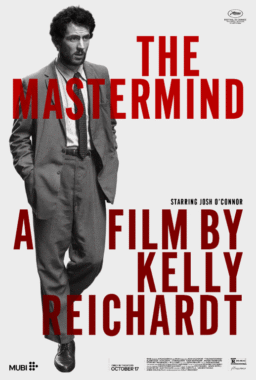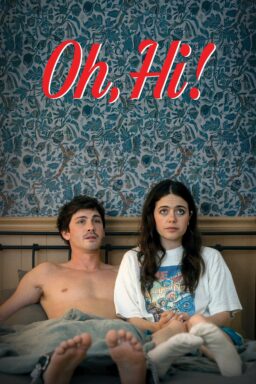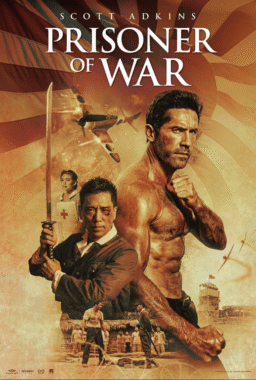It may be one of the 10 best movies of the 1970s, as the critic Richard Corliss once said, or it may be saddled with a script by a neophyte screenwriter, as Gene Siskel once said, but “Beyond the Valley of the Dolls” was one of the great experiences of my life. When Russ Meyer, the King of the Bs, called up in 1969 to ask me to write a screenplay at 20th Century Fox, he began an adventure later described as the maniacs taking over the studio. In six reckless weeks, starting with only a title, we created the movie from scratch. “This is not a sequel!” the ads said. “There has never been anything like it!”
“BVD” was made during that brief period when major studios produced X-rated films, although today it looks more like an R. It cost $900,000, including the development costs for two discarded screenplays by Jacqueline Susaan, and became one of the most profitable movies on the studio’s books. But the official Fox history doesn’t even mention it, and although “Beyond” was briefly been available on VHS and laserdisk, both formats are long out of print, maybe because studio management preferred to forget its dalliance with the X.
Only recently, with a younger generation of executives who grew up with the film as a cult favorite, has it come back into favor; a DVD is planned for later this year, and I have been approached about a Broadway version. Last year the studio struck a new 35mm print, which played to sold-out houses at Film Forum in New York, and opens Friday at the Music Box in Chicago, as part of a national tour.
My friendship with Russ Meyer began in a sense in 1960, when his first film, “The Immoral Mr. Teas,” opened at the Illini Theater in my home town of Champaign-Urbana, Illinois. It played on and off for two years, and was a staple during exam weeks. Meyer, who had photographed many of the first year’s Playmates for Hugh Hefner, adopted the Playboy standard of “the girl next door” and invented the “nudie” genre. His films didn’t feature tacky strippers, but wholesome young women in a format that looked but didn’t touch.
(Mr. Teas, played by Meyer’s old Army buddy Bill Teas, was a dentures deliveryman who suffered from a strange condition that allowed him to see women unclothed.)
By the mid-1960s, Meyer had moved on to his “drive-in period,” producing movies with little nudity but lots of cleavage and violence. Two of them inspired the names of rock bands: “Mud Honey,” and the immortal “Faster, Pussycat! Kill! Kill!” Then in 1968 came “Vixen,” which cost $72,000, grossed $6 million, and inspired a front-page article in the Wall Street Journal by the aptly named Steven Lovelady, crowning Meyer the “King of the Nudies.” Lovelady mentioned Meyer’s auteur status and cult following. (“Teas,” according to the distinguished critic Leslie Fiedler, was “the best comedy of 1960.”)
I wrote a letter to the Journal applauding its recognition of a director whose dynamic editing style and distinctive energy was exciting whether or not he made skin flicks. Meyer wrote back with thanks, called me the next time he was in Chicago, and we became friends.
When Richard Zanuck and David Brown, then running Fox, offered him a contract and the title “Beyond the Valley of the Dolls,” he hired me to write the screenplay, and I took a six-week leave from the Sun-Times. We moved into a three-room office on the Fox lot and concocted the screenplay in sessions involving yellow legal pads and much laughter.
The lot was not a happy place in those days. “Jeez, you guys gotta save the studio,” moaned the legendary publicist Jet Fore. “Every producer in town has his nephew up in the hills trying to remake ‘Easy Rider,’ and whadda we got in the can? Nothing but a Western and two war movies.” (The Western was “Butch Cassidy and the Sundance Kid,” and the war movies were “Patton” and “M*A*S*H.”)
Working with Meyer was exhilarating but demanding. He equated writing with typing. He kept his office door open, and whenever he couldn’t hear my typewriter keys, he’d shout, “What’s the matter?” We screened the original “Valley of the Dolls” (neither one of us ever read the book), thought it was pretty bad, and agreed to do a satire on the same formula: Three sexy young women come to Hollywood seeking fame and fortune, but fall afoul of sex, drugs and vanity. Our heroines would not be movie stars, however, but members of an all-girl rock trio, the Carrie Nations. The movie, we reassured Jet Fore, would be “the first rock camp horror exploitation musical.”
The story came from my own inflamed imagination, stoked by Meyer’s love of absurd melodrama. I remember one day when I started laughing uproariously at about page 104 . “What’s the matter?” Meyer shouted. I hurried into his office. “Z-Man is a girl!” I said. “He’s what?” he asked. “Z-Man has been a woman all along!” I explained. “He reveals his secret to Wonder Boy during the orgy scene!” Meyer nodded judiciously. “You can never have too many women in the picture.”
The film was cast with veterans of other Meyer pictures, like Erica (“Vixen”) Gavin, Chuck (‘Cherry, Harry and Raquel”) Napier, Haji “Pussycat”) and Henry Rowland as a mysterious bartender named Martin Bormann. Blink and you’ll miss Pam Grier’s first screen appearance. Veteran Meyer composer Stu Phillips signed on, penning such songs as “Look On Up at the Bottom” and “Come With the Gentle People.” I introduced Russ to his future wife, Fox contract starlet Edy Williams, at the studio commissary, and she was cast as Ashley St. Ives. (The character was originally named Ashley Famous, after the agency headed by Ted Ashley, but Zanuck and Brown vetoed that.) Two Playboy Playmates, Cynthia Myers and Dolly Read, were cast, along with the beautiful African-American model Marcia McBroom, as the Carrie Nations. John Lazar played the crucial role of Ronnie “Z-Man” Barzell. The Strawberry Alarm Clock was signed to appear in a party scene.
As the film went into production, the skin flick era was ending and hard-core pornography was appearing on American screens. Russ and I went to see “I am Curious (Yellow)” on Hollywood Blvd, and he emerged shaking his head. “I’ll never do hard-core,” he said, “First, I don’t want to share my grosses with the Mob. Second, I’ve never been that interested in what goes on below the waist.” Russ was, as everyone knew or could have guessed from his films, a breast man. “Where do you find those women?” I asked him. “After they surpass a certain bra size,” he said, “they find me.”
The movie went into production with the distinguished cinematographer Fred Koenekamp behind the camera. Russ, a Signal Corps cameraman in World War Two and a perfectionist who had always shot his own films, drove Fred nuts with demands for tighter focus. The actors were briefed by Meyer before every scene, in solemn tones. Chuck Napier told me one day. “You wrote this, Roger. It reads like a comedy to me. But, hell, Russ treats it like Eugene O'Neill. He’s lecturing us on character motivation and symbolism and deep meanings.” Russ knew it was a comedy, but never admitted that to the actors: “No actor can be funny by trying to be funny,” he told me.
“Beyond the Valley of the Dolls” was released on June 17, 1970, a day shy of my 28th birthday. The critic John Simon found it was “rather like a Grandma Moses illustration for a work by the Marquis de Sade.” Vincent Canby wrote in the New York Times: “Any movie that Jacqueline Susaan thinks would damage her reputation as a writer cannot be all bad.”
Thirty-three years after the film’s first release, it remains an indestructible cult classic, long ignored by the studio, unavailable on video, sometimes seen on cable, still finding new fans. Students at the University of Colorado performed their own stage version for me at Boulder five years ago. When the film had its 20th anniversary screening in 1990 at the University of Southern California, the students recited the dialogue in unison with the screen. When it played at the University of Texas, an academic declared, “On a structural level, Meyer is, absurd as it may seem, the logical successor to Sergei Eisenstein.” At the just-concluded Sundance film festival, directors Larry Charles of “Seinfeld” and Dan Algrant of “People I Know” told me they’d seen it many times. Mike Meyers pays homage in his Austin Powers movies (“This is my happening–and it freaks me out!”)
The 1970s are now enshrined as the golden age of American movies, when directors did their thing and the studios let them get away with it. No one got away with more than Russ Meyer did on BVD, making a subversive indie satire within the very system itself and getting the decade off on the right foot.
What do I think about the film today? Russ, who often cited “Li’l Abner” as his greatest artistic influence, was the auteur and I was merely the acolyte, but quite frankly and in all due modesty, I think it is the best rock camp horror exploitation musical ever made. Is it actually one of the ten best movies of the decade? Richard Corliss is one of two critics who think so, according to Leonard Maltin’s Film Guide, although I have never been able to find out who the other one is. Maybe it is me.











